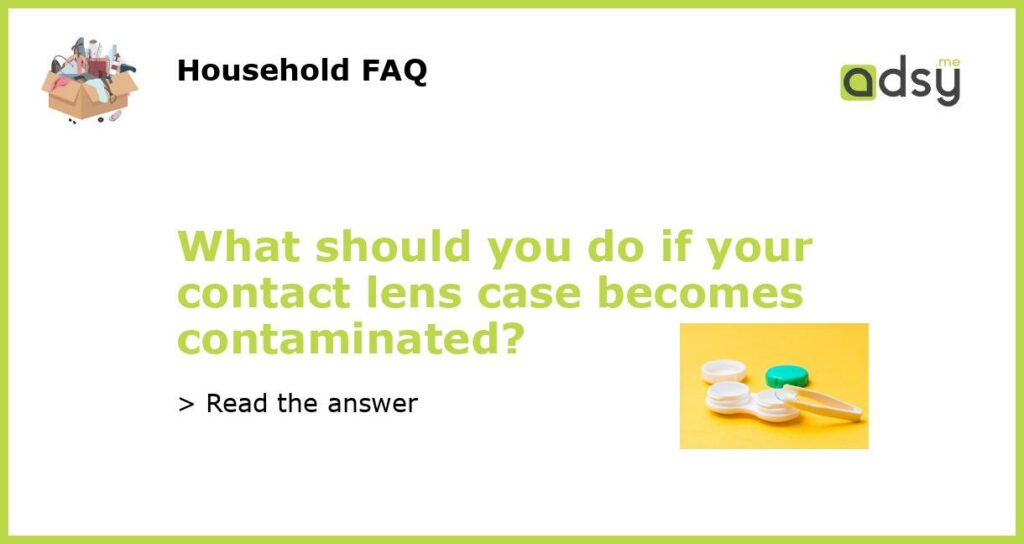Know the Signs of Contamination
Before you can take action, you will need to know whether or not your contact lens case is contaminated. Signs of contamination may include discoloration, unpleasant odors, or the presence of debris in the case. If you notice any of these signs, it is important to take action right away to prevent further contamination of your lenses.
Clean and Disinfect the Case
If you suspect that your contact lens case has become contaminated, the first step is to clean and disinfect it. Start by emptying out any leftover solution and then rinsing the case thoroughly with fresh solution. Next, use a disinfectant solution (such as hydrogen peroxide) to clean the case thoroughly. Be sure to follow the manufacturer’s instructions carefully to ensure that you are using the disinfectant properly.
Replace the Case
If you are unable to adequately clean and disinfect your contaminated contact lens case, it may be time to replace it. Contact lens cases should be replaced every three months or as recommended by your eye doctor. Using an old or contaminated case can put you at risk for infections and other eye problems that can lead to serious complications.
Take Steps to Prevent Contamination
The best way to deal with a contaminated contact lens case is to prevent contamination from occurring in the first place. Always wash your hands thoroughly before handling your contact lenses or case. Use fresh solution each time you store your lenses, and never use water, saliva, or anything else to clean or rinse your lenses or case. Finally, store your lenses in a cool, dry place, away from direct sunlight or heat.
See Your Eye Doctor
If you are experiencing symptoms of an eye infection or other problem as a result of a contaminated contact lens case, it is important to see your eye doctor as soon as possible. Your doctor can diagnose and treat any underlying issues, as well as provide guidance on how to avoid future contamination and protect your eye health.






